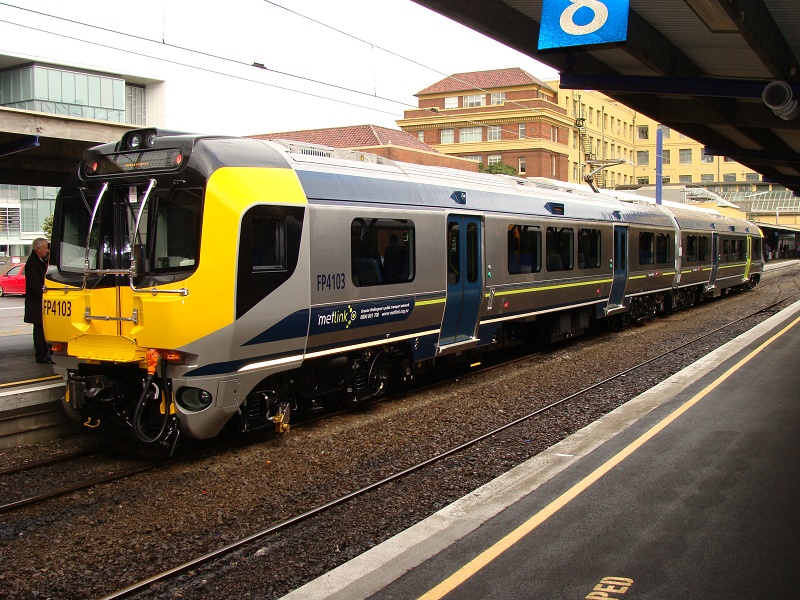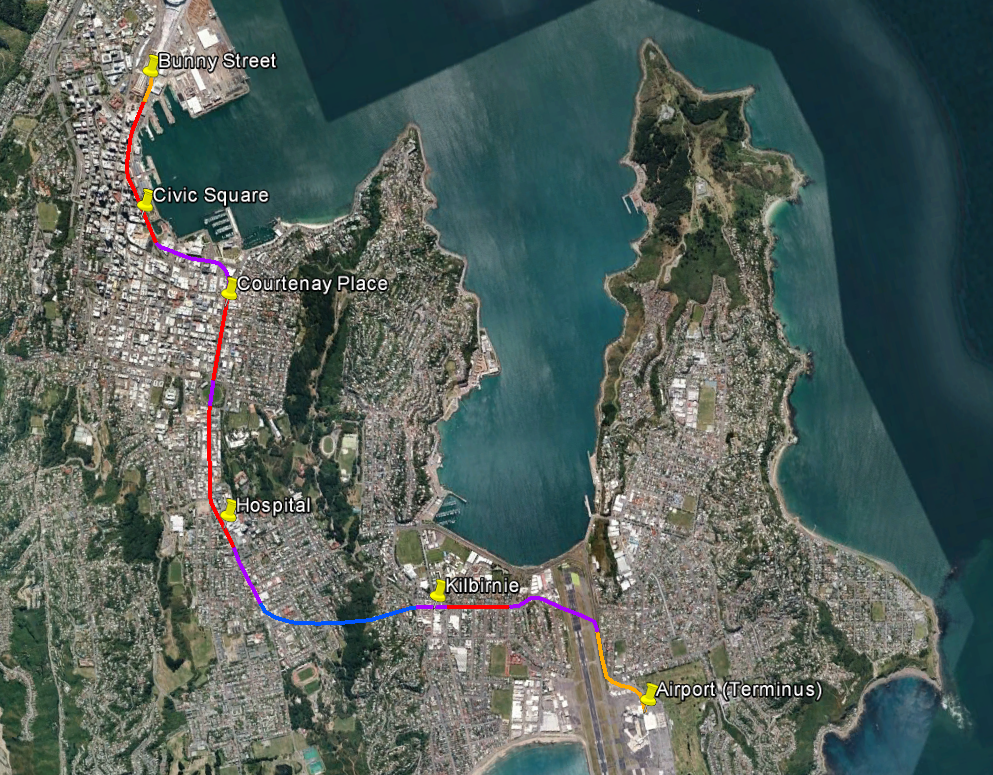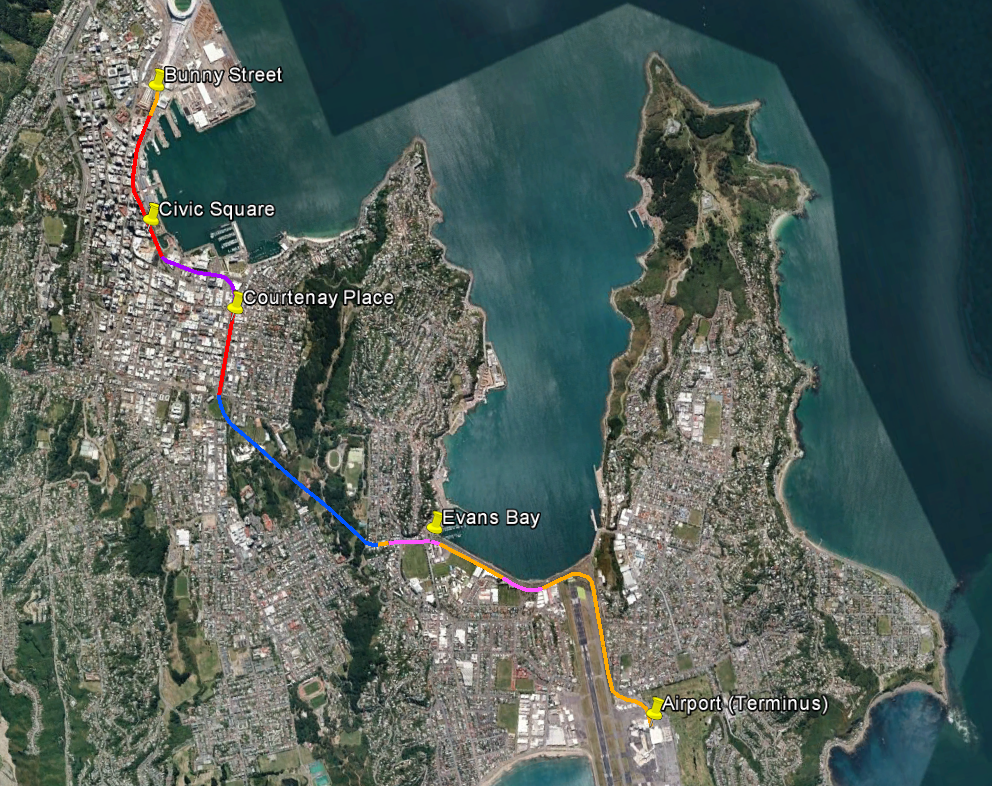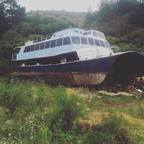In recent years, the government has poured vast sums of money into highways in Wellington. The just-opened Kapiti Expressway cost $630 million. Transmission Gully is still under construction, and will cost $850 million, a figure that doesn’t even include the extra costs that come from the Public-Private Partnership scheme used to build it.
There’s more in the pipeline, too. The planned Peka Peka to Otaki expressway will cost $330m. NZTA is eyeing up another $1,400-$2,100 million on traffic upgrades to State Highway 2 through Lower and Upper Hutt. Until the recent decision not to proceed with the itself-expensive Basin Flyover, there were also plans to duplicate the Mount Victoria and Terrace tunnels, at a cost of who knows how many more millions. When some sort of solution to the Basin issue is hashed out, doubtless those plans will rear their heads again.
It’s good that the government feels it has money to spend on Wellington. But we’ve known for a long time, in Lewis Mumford’s words, that building ever more highways to deal with congestion is the equivalent of “loosening your belt to cure obesity”. What if we wanted to do something that would really transform how people got around Wellington? Something that would open up access to the region?
Something must be done, and this is something
Auckland is finally getting its much-needed City Rail Link. What would the same thinking do for Wellington? We would forget talk of buses crawling along bus lanes at 30km/h, stopping at every traffic light, stuck behind another dozen buses in front. Even light rail would fail to be much more effective, since it would follow the same route as the buses.

image: CC-BY-SA, Wikipedia user Matthew25187
What would be truly transformative is to extend the heavy rail network. Wellington is well-connected to the north: Porirua, the Hutt - but not to its older southern suburbs. Those suburbs also include some of the region’s major destinations, such as the main hospital in Newtown, and the international airport in Rongotai.
This is hardly an original idea. Even Wellington’s official plans for public transport have acknowledged the existence and value of the idea. But they’ve always dismissed it as “too expensive”, without even bothering to take a serious look at what it would cost.
Maybe it is too expensive, but I think it deserves more investigation than it has had in the past. With billions of dollars being thrown around at low-value roads, it’s time to reconsider the rail option.
What’s involved
I’ve come up with a couple of ideas for routes - each extending the existing heavy rail network from the current terminus to a new terminus at the airport, with a double-tracked electrified line. It would have six platforms there: enough, hopefully, to turn around 24 trains per hour. At peak this would allow 10 trains per hour on each of the Hutt and Kapiti Lines, plus another 4 trains per hour from the Johnsonville Line, to continue from the current terminus and finish at the airport instead.
The path will break from the current station at ground level, and head along the Quays in a trench. This is not the greatest of civic surroundings, but the Quays are already terrible and cause massive severance, so this won’t be any worse. We then head down between Kent and Cambridge Tces to the Basin Reserve.
After that, I’ve picked two representative options. The first is the “full” option, with stops at the Hospital in Newtown and in Kilbirnie.

The second takes a cheaper route with more of the route at ground level, alongside Cobham Drive, but doesn’t have a Newtown/Hospital station.

In the maps, red is trench, purple is cut-and-cover, blue is bored, orange is at-grade, and pink is elevated. Pins are at stations.
These are not necessarily the best options - in particular, we may want extra or fewer stations, or to move their locations. But it should be able to give us an idea of what this would cost.
The cost - a back of the envelope calculation
We can look at other rail projects to get a very, very rough idea of cost. For projects with no serious tunnelling or property acquisition, DART and the Manukau Link both cost around $25m/km. Both included stations at around one for every 1 or 2 km.
For trenched railways, New Lynn cost $190m and is 1km, so (easy maths here), $190m/km. It includes one station.
There have been few tunnelling projects in NZ, but the CRL includes 4.2km of tunnelling (both east and west connections) and at $2,500m works out to $600m/km. If you include the 1.3km of earthworks-heavy modifications to existing lines as well, it is $450m/km.It also includes one cut and cover station, one mined station, and one rebuilt trenched station.
The early works part of the CRL projects is around $250m for 1km, so (again easy maths) $250m/km. This doesn’t include track, so adding that at the rate of DART or Manukau, it would be $275m/km.
This CRL cost is similar to the range of costs Alon Levy found for subway projects overseas.
Based on these figures, for our back-of-the-envelope calculation, I’m going to go with per-km costs of $25m for at-grade construction, $200m for trenches, $300m for cut and cover, and $450m for bored. With nothing really to go on, we’ll take $200m for elevated as well.
Crunching the numbers
Option 1 includes
| Method | Length (km) | Cost ($m) |
| Trench | 3.34 | 668 |
| Cut and cover | 2.43 | 729 |
| TBM | 1.23 | 553 |
| At-grade | 1.14 | 29 |
| TOTAL | 8.14 | 1979 |
So 8.14km at an average $243m/km.
Option 2 includes
| Method | Length (km) | Cost ($m) |
| Trench | 1.76 | 352 |
| Cut and cover | 0.78 | 234 |
| TBM | 1.68 | 756 |
| Elevated | 0.71 | 142 |
| At-grade | 2.68 | 67 |
| TOTAL | 7.61 | 1551 |
So 7.61km at an average $204m/km.
These figures don’t allow much for property acquisition, but luckily we won’t need much. The only big takes are at the airport, which WCC partly owns and for who the railway would be a huge positive. And at New World Chaffers Street. This is a fairly similar situation to Commercial Bay in Auckland, and so it’s possible this could be acquired effectively for nothing as part of a redevelopment of the site.
Stations don’t come free, either, but they’re included in the sample projects I based the numbers on.
Summary
All in all, this back of the envelope look makes it seem like rail to the airport, in Wellington, would cost aroud $1.5-$2 billion. It works out cheaper per km than Auckland’s CRL, because much can be just trenched or at-grade instead of needing tunnels.
Curiously, that’s almost exactly what NZTA wants to spend on an expressway to Upper Hutt. What do you think would be a better buy? Widening another road to funnel more cars into the city? Or a way of getting around all of the city, free from traffic?
Maybe you think Wellington doesn’t need something of this scale. Perhaps, but if so it hardly needs a pile of new highways, either. If we’re going to do something big, do something good. Don’t fritter it away on motorway lanes that will be just as congested as the last ones.
